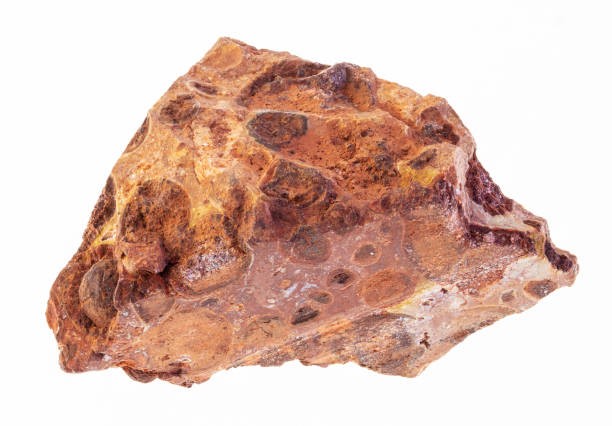
Bauxite is the Earth’s primary source of aluminum — a reddish, clay-rich rock formed over millions of years through tropical weathering, where aluminum-rich parent rocks undergo intense leaching in a process known as laterization. Unlike typical minerals, bauxite is a naturally occurring composite, consisting of aluminum hydroxide minerals such as gibbsite, boehmite, and diaspore, mixed with iron oxides that give it its distinctive color. Found mostly in shallow, surface-level deposits, bauxite is efficiently extracted using open-pit mining methods, which involve careful land clearing, topsoil preservation, overburden removal, and mechanical excavation.
Once mined, bauxite is typically crushed and sometimes washed to remove impurities before being transported to alumina refineries. The transformation from raw ore to finished aluminum takes place in two key stages — the Bayer Process, which refines bauxite into alumina (aluminum oxide), and the Hall-Héroult Process, where alumina is electrolytically reduced into pure aluminum metal. While its primary role lies in aluminum production, bauxite is also used in refractories, abrasives, cement, and other industrial applications requiring high aluminum content.
Globally, Australia leads in production, Guinea holds the richest reserves, and China dominates consumption, with rising demand driven by infrastructure, packaging, and electric vehicle industries. As with all large-scale mining, bauxite extraction comes with environmental responsibilities — particularly around land use, dust control, and red mud management (a by-product of refining). At SFS, we prioritize sustainable mining practices, including progressive land rehabilitation, safe waste handling, and strict regulatory compliance — ensuring that bauxite is not only a resource of growth, but also of responsibility.
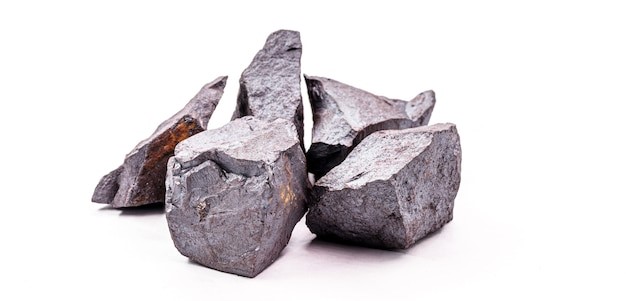
Iron ore is the backbone of modern industry — the essential raw material behind steel, the world's most used structural metal. Found primarily in the form of hematite and magnetite, these iron-rich minerals are the product of ancient geological events that shaped the Earth’s crust over billions of years. Due to the vast and near-surface nature of most deposits, open-pit surface mining remains the most efficient method of extraction. This involves systematic land clearing, preservation of topsoil, removal of overburden, and precision excavation using high-capacity machinery.
Once extracted, the ore is hauled to processing units where it is crushed, and for lower-grade material, subjected to beneficiation — an essential upgrading step using techniques like magnetic separation, grinding, or flotation to boost iron concentration and eliminate impurities. The final product is then transported, either domestically or for export, to steel mills, where it fuels the global demand for infrastructure and development. Countries like Australia and Brazil dominate the export landscape, while China remains the world’s largest importer and steel producer.
Nearly 98% of all mined iron ore is used in steelmaking — transformed first into molten pig iron in blast furnaces and then refined into various steel grades used in construction, automotive, machinery, appliances, and more. Yet, the scale of iron ore mining brings with it substantial environmental challenges — from land disturbance and habitat disruption to dust generation, tailings, and water contamination risks. In response, leading players are increasingly investing in sustainable mining practices, including land reclamation, energy-efficient operations, dust suppression, and water resource management.
At SFS, we are committed to delivering high-quality iron ore while aligning with modern standards of eco-conscious mining and global responsibility.
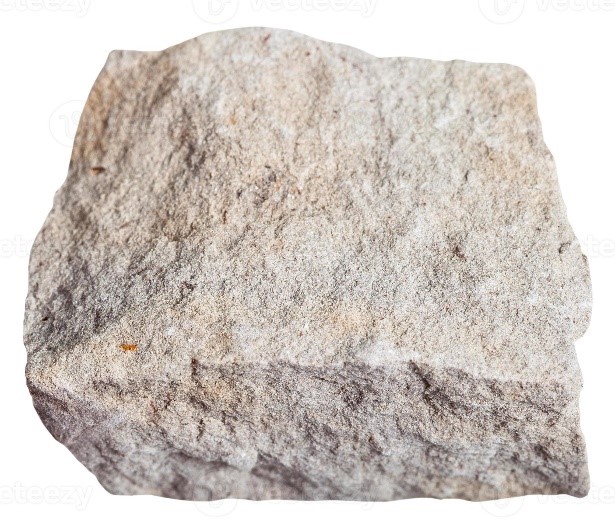
Dolomite is a naturally occurring carbonate mineral composed of calcium and magnesium carbonate ‘CaMg(CO3)2‘`CaMg(CO₃)₂`‘CaMg(CO3)2‘, formed over millions of years through a geological process called dolomitization. Unlike ordinary limestone, dolomite is denser, harder, and chemically more stable due to the presence of magnesium. These enhanced properties make it highly sought after across multiple industries. Dolomite is primarily extracted through surface mining (quarrying) methods, involving systematic geological surveys, controlled blasting, and mechanized excavation. Once mined, it undergoes a series of crushing, screening, and sometimes calcination or fine grinding, depending on its end use.
Its strength and versatility make dolomite a vital resource in the construction industry, where it is used as road base, railway ballast, and concrete aggregate. In the steel sector, it acts as a fluxing agent during smelting and serves as a refractory lining material due to its high heat resistance. In agriculture, dolomite helps correct soil acidity and adds essential magnesium and calcium nutrients for crops. It also finds applications in glass manufacturing, water treatment, and as a mineral filler in paints, ceramics, and chemical processes. Despite the industrial scale of dolomite mining, its environmental impact is carefully managed through dust control, responsible water usage, and progressive land rehabilitation. At SFS, we ensure every step of dolomite extraction and supply aligns with international quality and sustainability standards, delivering value from ex-mine to export, with full support for trade terms like FOR, FOB, and CIF.
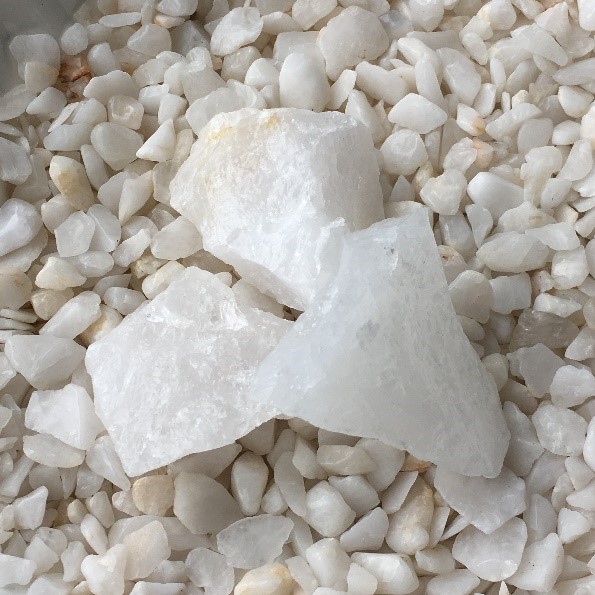
White Quartz, composed of chemically pure silicon dioxide (SiO₂), is one of the Earth's most abundant and versatile minerals. Found in a wide range of geological environments—including igneous, metamorphic, and sedimentary formations—it appears in crystalline, milky, or translucent forms, each valued for its purity, hardness, and visual appeal. With major deposits occurring in surface-level veins and massive formations, open-pit quarrying is the dominant mining method, though deep, high-grade deposits may require underground mining techniques.
The extraction process begins with geological surveys, followed by careful removal of vegetation and overburden. Owing to quartz’s exceptional hardness, controlled blasting is often required before excavation. The material is then transported to a processing facility, where it is subjected to multi-stage crushing, screening, and washing to remove impurities and produce the desired size fractions. For high-specification applications, advanced purification methods such as acid washing or flotation may be used to eliminate trace contaminants and enhance silica content.
White quartz plays a vital role across multiple industries. Its high purity and silica concentration make it essential in the glass industry, from basic window glass to optical and lab-grade applications. In the electronics sector, its piezoelectric properties support components like oscillators, sensors, and frequency filters. Its hardness makes it a key material in abrasives, cutting tools, and industrial sandblasting. It also serves in the production of silicon metal, used in semiconductors and solar technology. Beyond industrial use, it acts as a functional filler in paints, plastics, and rubber, and as a decorative aggregate in architectural surfaces like countertops and flooring.
Environmentally, white quartz mining is managed under strict regulatory frameworks to minimize impact. Land rehabilitation, dust suppression, and water management systems are integral to modern operations, ensuring that resource extraction aligns with sustainable and responsible mining practices. At SFS, we deliver high-grade white quartz with a commitment to quality, compliance, and global standards.
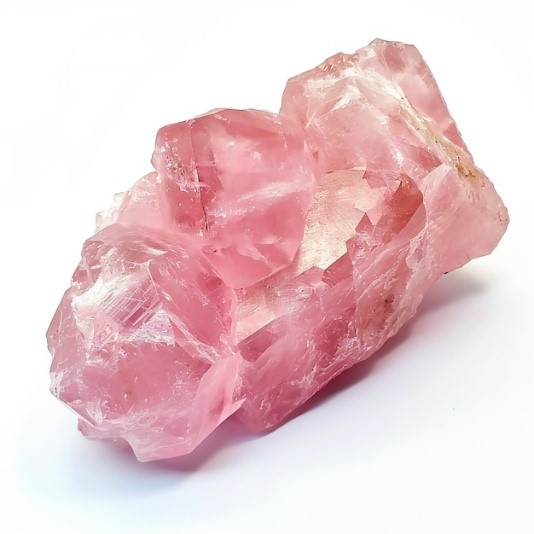
Pink Quartz, more widely known as Rose Quartz, is a stunning natural variety of silicon dioxide (SiO₂) celebrated for its soft pink to rich rose-red tones. Unlike ordinary-coloured stones, its hue is not the result of simple impurities, but rather delicate mineral inclusions such as dumortierite, phosphates, or fibrous amphiboles embedded within its crystalline structure. Found primarily in pegmatite formations and hydrothermal veins, rose quartz commonly occurs in translucent, milky, or massive form — ideal for decorative and ornamental use. Owing to its presence in large surface-level pockets, it is mined using open-pit quarrying, a method that allows for efficient extraction with minimal subsurface disturbance.
Mining operations focus heavily on preserving the natural beauty of the material. After detailed geological assessments, the site is prepared by clearing vegetation and removing overburden. The quartz-bearing rock is carefully fractured using controlled blasting or mechanical ripping, followed by selective excavation to avoid fracturing the stone. Once transported to the processing unit, it is crushed, screened, and, for premium-quality material, manually sorted to retain its color integrity and structure.
Highly valued in jewelry, decorative arts, and interior design, rose quartz is crafted into everything from beads and cabochons to carvings, sculptures, spheres, and polished slabs. It is also used as a decorative mineral in landscaping, architectural surfaces, and terrazzo floors, where its unique color adds natural warmth. Although rose quartz mining may lead to localized dust and land disturbance, modern sustainable practices — including dust suppression, water use management, and post-mining land rehabilitation — ensure that its extraction aligns with environmental responsibility. At SFS, we supply carefully mined and processed rose quartz, combining natural elegance with global trade precision.
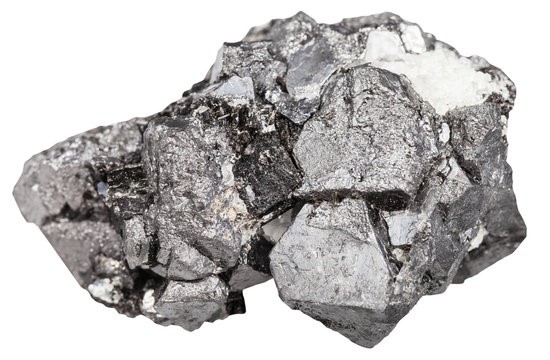
Magnetite, scientifically known as iron oxide (Fe₃O₄), is one of the most valuable iron ores in global trade and uniquely distinguished as the most magnetic naturally occurring mineral on Earth. With its rich black luster and dense composition, magnetite plays a critical role in the global steel industry, where it serves as a high-grade feedstock for producing pig iron and refined steel. Formed over billions of years through complex geological processes, magnetite is commonly found in vast, near-surface ore bodies, making it ideally suited for open-pit surface mining.
The extraction process begins with detailed geological assessments to define the quality and quantity of the deposit. After clearing vegetation and removing overburden, controlled blasting fractures the magnetite-bearing rock, which is then excavated using heavy-duty mining equipment. What sets magnetite apart is its beneficiation stage — the ore is ground to a fine powder and processed through magnetic separation, a method that efficiently isolates iron-rich particles from waste rock. This produces a premium concentrate with iron content often exceeding 65%, ideal for steelmaking applications.
Magnetite is primarily exported to steel mills across the globe, transported through dedicated rail and shipping logistics. Countries like Australia and Brazil dominate global supply, while India's magnetite reserves, especially in Karnataka, hold growing strategic value. Apart from steel production, magnetite is also used in coal washing (dense media separation), as a natural black pigment, and in specialized magnetic technologies.
Environmental management is crucial in magnetite mining, particularly due to the handling of tailings, sulfide-bearing waste rock, and water usage. At SFS, we are committed to sustainable practices — incorporating dust control, acid rock drainage prevention, tailings management, and progressive land rehabilitation to ensure responsible extraction from mine to market.
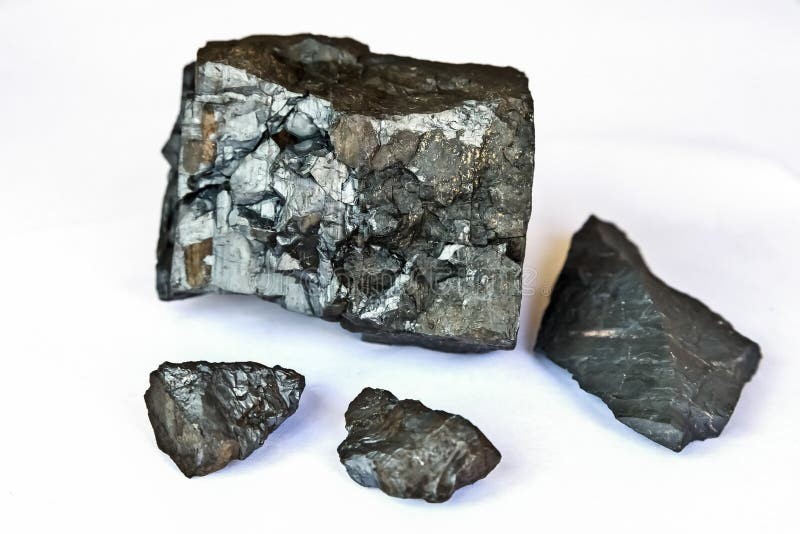
Copper is a highly conductive, malleable, and corrosion-resistant metal that has become essential to the infrastructure of modern civilization. While rarely found in its native form, copper commonly occurs in ore minerals such as chalcopyrite (CuFeS₂), chalcocite (Cu₂S), and oxides like malachite and azurite. These deposits are formed through hydrothermal systems, sediment-hosted layers, and volcanogenic massive sulfide (VMS) processes. Given the large, low-grade nature of many copper ore bodies, surface mining (open-pit mining) is the predominant extraction method, although underground mining is still used for rich, deep-seated deposits.
Copper mining begins with extensive geological exploration, including drilling and sampling to model the ore body. After preparing the site and removing overburden, the ore is extracted through drilling, blasting, and excavation using massive haul trucks and loaders. The ore is then sent to a processing facility where it undergoes crushing, grinding, and beneficiation. For sulfide ores, froth flotation is the primary method, using chemical reagents to concentrate copper particles, while heap leaching and solvent extraction-electrowinning (SX-EW) are more commonly used for oxide ores.
The final copper concentrate is processed via smelting and electrolytic refining, resulting in 99.99% pure copper cathodes, which are used across power transmission, telecommunication, electronics, automobiles, construction, and plumbing. Copper’s ability to form alloys like brass and bronze further expands its industrial applications. Globally, Chile leads in copper production, followed by the DR Congo and Peru. In India, major reserves are located in Rajasthan (Khetri Copper Belt) and Madhya Pradesh (Malanjkhand).
However, the environmental footprint of copper mining is significant — involving land degradation, tailings, water use, and air emissions. Leading operations now employ advanced environmental management, including dust suppression, acid mine drainage control, wastewater treatment, and progressive mine site rehabilitation. At SFS, we ensure that every step of copper supply — from mine source to port logistics — aligns with modern expectations of efficiency, responsibility, and sustainability.

Copper is a highly conductive, malleable, and corrosion-resistant metal that has become essential to the infrastructure of modern civilization. While rarely found in its native form, copper commonly occurs in ore minerals such as chalcopyrite (CuFeS₂), chalcocite (Cu₂S), and oxides like malachite and azurite. These deposits are formed through hydrothermal systems, sediment-hosted layers, and volcanogenic massive sulfide (VMS) processes. Given the large, low-grade nature of many copper ore bodies, surface mining (open-pit mining) is the predominant extraction method, although underground mining is still used for rich, deep-seated deposits.
Copper mining begins with extensive geological exploration, including drilling and sampling to model the ore body. After preparing the site and removing overburden, the ore is extracted through drilling, blasting, and excavation using massive haul trucks and loaders. The ore is then sent to a processing facility where it undergoes crushing, grinding, and beneficiation. For sulfide ores, froth flotation is the primary method, using chemical reagents to concentrate copper particles, while heap leaching and solvent extraction-electrowinning (SX-EW) are more commonly used for oxide ores.
The final copper concentrate is processed via smelting and electrolytic refining, resulting in 99.99% pure copper cathodes, which are used across power transmission, telecommunication, electronics, automobiles, construction, and plumbing. Copper’s ability to form alloys like brass and bronze further expands its industrial applications. Globally, Chile leads in copper production, followed by the DR Congo and Peru. In India, major reserves are located in Rajasthan (Khetri Copper Belt) and Madhya Pradesh (Malanjkhand).
However, the environmental footprint of copper mining is significant — involving land degradation, tailings, water use, and air emissions. Leading operations now employ advanced environmental management, including dust suppression, acid mine drainage control, wastewater treatment, and progressive mine site rehabilitation. At SFS, we ensure that every step of copper supply — from mine source to port logistics — aligns with modern expectations of efficiency, responsibility, and sustainability.
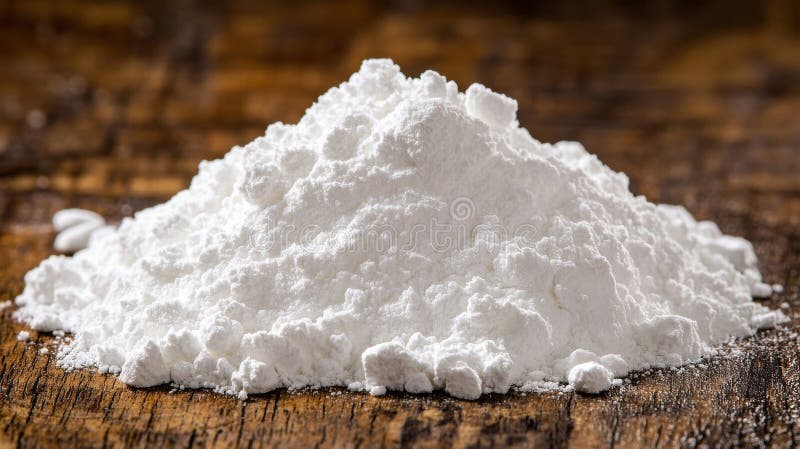
Alumina Powder, or aluminum oxide (Al₂O₃), is a high-performance industrial ceramic material produced through the refining of bauxite ore via the Bayer process. Unlike minerals that are mined in their final form, alumina is a processed material — extracted by dissolving bauxite in hot caustic soda, separating impurities, and precipitating aluminum hydroxide, which is then calcined at high temperatures (typically above 1000°C) to yield a pure, fine white powder. The calcination process can be controlled to produce various grades of alumina — such as calcined, tabular, or fused alumina — each tailored for specific industrial functions.
Thanks to its exceptional hardness, thermal stability, chemical resistance, and electrical insulation, alumina powder is indispensable in multiple industries. Its primary application is as the intermediate material in aluminum metal production, where it is electrolytically reduced in the Hall-Héroult process. Beyond metallurgy, alumina is used in technical ceramics for components like spark plugs, cutting tools, wear parts, and valves, as well as in refractories for furnace linings that must endure extreme heat. It is also essential in abrasives (grinding wheels, sandpaper), electronic substrates, water purification, and as a filler in plastics and rubber to improve mechanical properties and heat resistance.
The production of alumina, however, comes with environmental challenges — most notably the generation of red mud, a highly alkaline by-product requiring careful disposal or reuse. Modern refineries are increasingly adopting sustainable red mud management, along with improved water recycling and emissions control. At SFS, we support the supply and trade of high-purity alumina powder, aligning with industries that demand both performance and environmental responsibility in material sourcing.